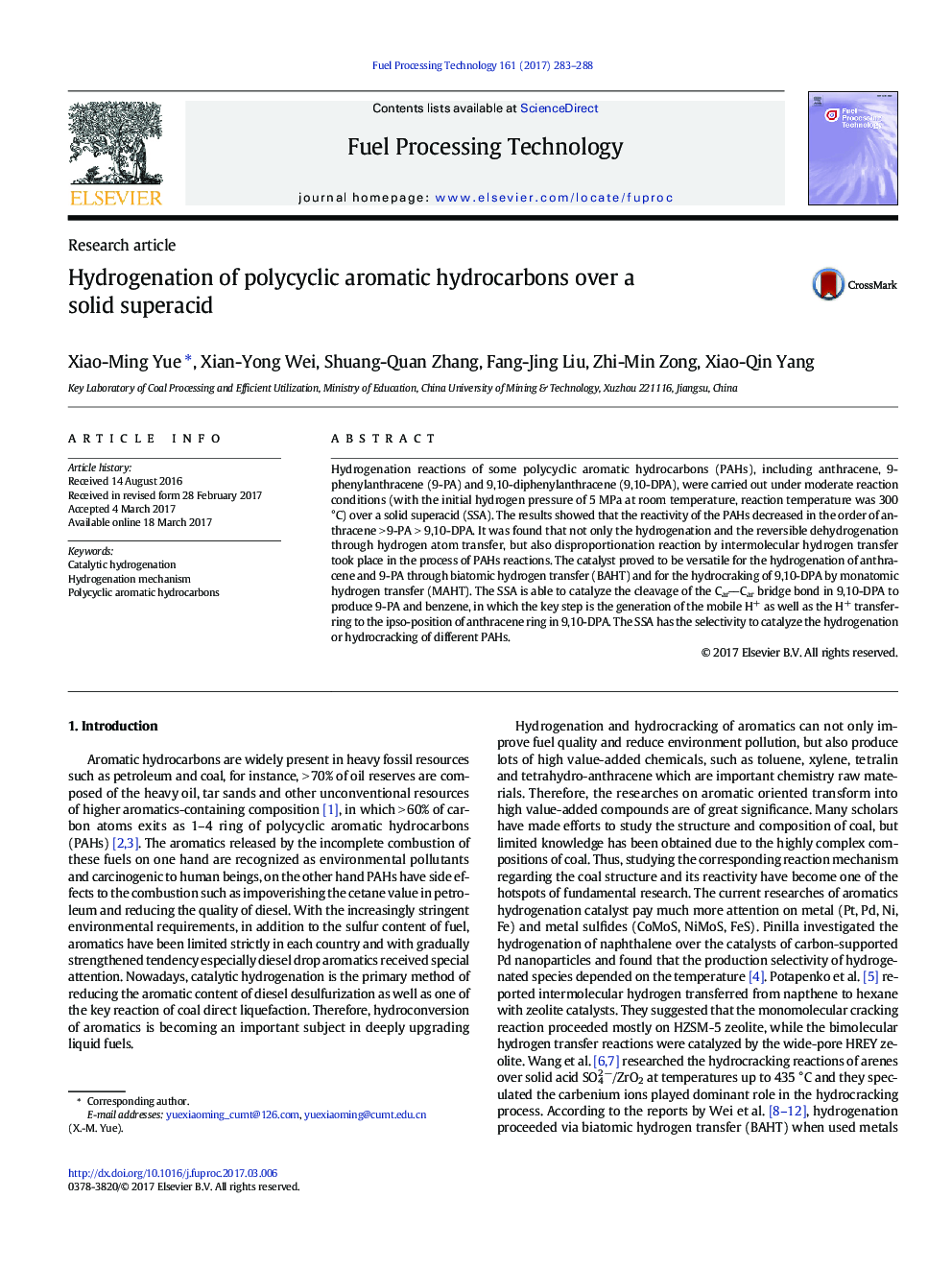| کد مقاله | کد نشریه | سال انتشار | مقاله انگلیسی | نسخه تمام متن |
|---|---|---|---|---|
| 6476547 | 1425385 | 2017 | 6 صفحه PDF | دانلود رایگان |
- Hydrogenation reactions of anthracene, 9-PA and 9,10-DPA were carried out under 300 °C.
- Disproportionation reaction occurs accompanied by hydrogenation and dehydrogenation.
- Hydrogenation and hydrocraking take place simultaneously in the catalytic reaction of 9,10-DPA.
- Two kinds of active sites existing on the SSA can promote H and H+ generation.
- Hydrogenation of the PAHs is achieved by BAHT and hydrocraking by MAHT over the SSA.
Hydrogenation reactions of some polycyclic aromatic hydrocarbons (PAHs), including anthracene, 9-phenylanthracene (9-PA) and 9,10-diphenylanthracene (9,10-DPA), were carried out under moderate reaction conditions (with the initial hydrogen pressure of 5 MPa at room temperature, reaction temperature was 300 °C) over a solid superacid (SSA). The results showed that the reactivity of the PAHs decreased in the order of anthracene > 9-PA > 9,10-DPA. It was found that not only the hydrogenation and the reversible dehydrogenation through hydrogen atom transfer, but also disproportionation reaction by intermolecular hydrogen transfer took place in the process of PAHs reactions. The catalyst proved to be versatile for the hydrogenation of anthracene and 9-PA through biatomic hydrogen transfer (BAHT) and for the hydrocraking of 9,10-DPA by monatomic hydrogen transfer (MAHT). The SSA is able to catalyze the cleavage of the CarCar bridge bond in 9,10-DPA to produce 9-PA and benzene, in which the key step is the generation of the mobile H+ as well as the H+ transferring to the ipso-position of anthracene ring in 9,10-DPA. The SSA has the selectivity to catalyze the hydrogenation or hydrocracking of different PAHs.
203
Journal: Fuel Processing Technology - Volume 161, 15 June 2017, Pages 283-288
